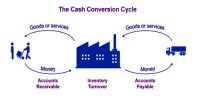Credit Policy Variable
A company’s policy on when its customers should pay for goods or services they have ordered a government’s policy at a particular time on how easy or difficult it should be for people and businesses to borrow and how much it should cost. A sample credit policy contains a number of elements that are designed to mitigate the risk of loss from extending credit to customers that cannot pay.
These variables are related and have a bearing on the level of stale, bad debt loss, discount is taken by customers, and collection expenses. The major controllable variables which affect demand are sales prices, Product quality, advertising, and the firm’s credit policy; Credit policy, in turn, consists of these variables:
(1) The credit period: Which is the length of time buyers are given to pay for their purchases. The credit period refers to the length of time allowed customers to pay for their purchases. It generally varies from 15 days to 60 days. When a firm does not extend any credit, the credit period would obviously be Zero.
(2) The credit standards: Which refer to the minimum financial strength of acceptable credit customers, and the amount of credit available to different customers? A firm has a wide range of choices in this respect. At one end of the spectrum, it may decide not to grant credit to any customer, however strong his credit rating may be.
(3) The firm’s collection policy: Which is measured by its toughness or laxity in following up on slow-paying accounts. A rigorous collection program tends to decrease sales, shorten the average collection period, reduce bad debts percentage and increase the collection expense.
(4) Any discount is given for early payment: It including the discount amount and period. Firms generally offer a cash discount to induce prompt payment; the percentage of discount and the period for which it is available are reflected in the credit terms.
















